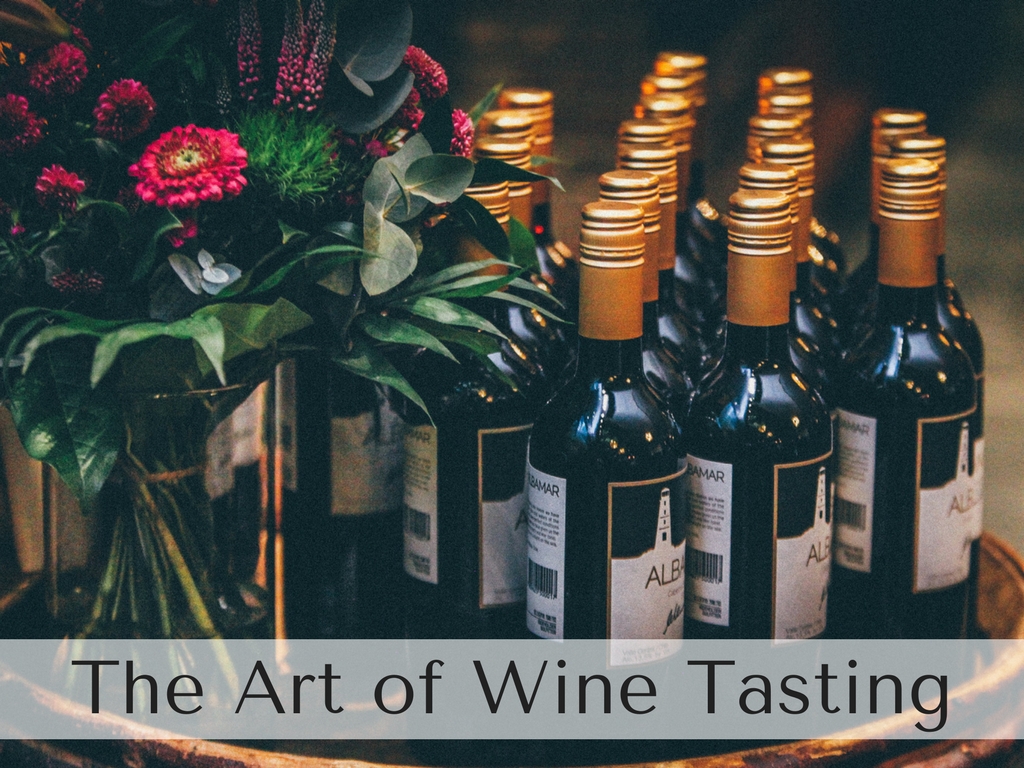At Design It Yourself Gift Baskets, we understand that wine tasting is a complex, yet fun, endeavor that has intrigued people since the beverage’s creation. Although fermenting grapes seems like a simple undertaking, the final product’s taste greatly depends on region, grape variety, and palate. Whether you’re a novice wine drinker who enjoys the taste of vino but doesn’t have much understanding of the wine tasting process, or a seasoned vintage drinker who can detect notes of oak or pepper, read on to better understand the four-step process that will improve your wine tasting experience.
But before you can begin any wine tasting, you must make sure you have the best conditions possible. This entails enjoying the wine at the temperature it’s intended to be served at – reds are often recommended at room temperature while whites and sparkling wines are typically served chilled – and removing yourself from any harsh scents or tastes. This will enable you to enjoy the wine to the fullest and therefore better appreciate its complexities.
Sight Evaluation
The first step in wine tasting is conducting a sight evaluation. Many facts about the wine can be found on its bottle, including alcohol percentage, origin, and grape variety, but talented wine tasters are able to learn much of these facts from a proper wine tasting. When issuing a sight evaluation, you are examining the wine’s color, thickness, and opacity. Many wine drinkers believe in gently swirling the glass in your hand, so that some of the wine comes up the side of the glass. As the wine trickles down toward the bottom of the glass, examine the characteristics of these trails or “legs” of wine. This will give you some clues into the wine’s character before moving on to the next step.
Scent Evaluation
Evaluating a glass of wine by scent is easy in practice but difficult to perfect. As for the actual act of sniffing the wine, slowly swirl your glass and hold your nose over the wine. Take a few inhales of the scent, and then put the glass aside for a moment to give yourself a moment to reflect on the scent. Practiced wine tasters believe in trying to classify the wine aroma, or grape variety, before trying to assess the wine bouquet, or characteristics of the wine that are developed during the fermentation and aging process. Wine aromas are also referred to as primary aromas, and include things like floral, herbal, and fruit flavors. Wine bouquets, also known as “secondary” and “tertiary aromas” are often associated with spices, elements, nuts, smoke, dairy products, and the location where the wine was fermented. Sometimes detecting these notes can be quite difficult as the combinations of aromas and bouquets are abundant. However, as you practice and familiarize yourself with the varieties of wine available, you’ll get better at being able to pick up on popular bouquets and aromas.
Taste Evaluation
It’s finally time to taste your wine. Most experts believe in sucking the wine into your mouth slowly, as if you were drinking it through a straw. This process helps to aerate the wine and allows its natural flavors to develop more. When you taste wine, aim to distinguish if it’s bitter, sweet, sour, or even salty. Next, evaluate the drink’s texture, using your taste buds to detect thickness. If a wine is higher in alcohol, or the grapes were riper during harvest, your tongue will feel a bit more coated or texturized after consumption. Lastly, after you’ve swallowed, think about how long you can taste the wine afterward. This measurement is known as evaluating the length of the wine.
Reflection
Lastly, it’s time to bring all these elements together to describe the wine’s complete flavor profile. When you’re just starting out on your wine tasting journey, it can be helpful to take notes as you go along with the tasting process, so you remember the early characteristics you detected in the process. Begin by thinking about broad terms (bitter vs. sweet), before pulling in more detailed descriptions (notes of oak or vanilla). Over time, and with some wine-fueled research, you’ll develop a more nuanced palate and become able to identify the characteristics of a glass of wine more quickly.
Whether you’re looking to become a wine expert or want to treat a wine aficionado in your life, order a wine gift basket. From convenient ready-to-order options to customizable items, Design It Yourself Gift Baskets has something that’s perfect for any and every wine drinker – be they novice or vintage.






